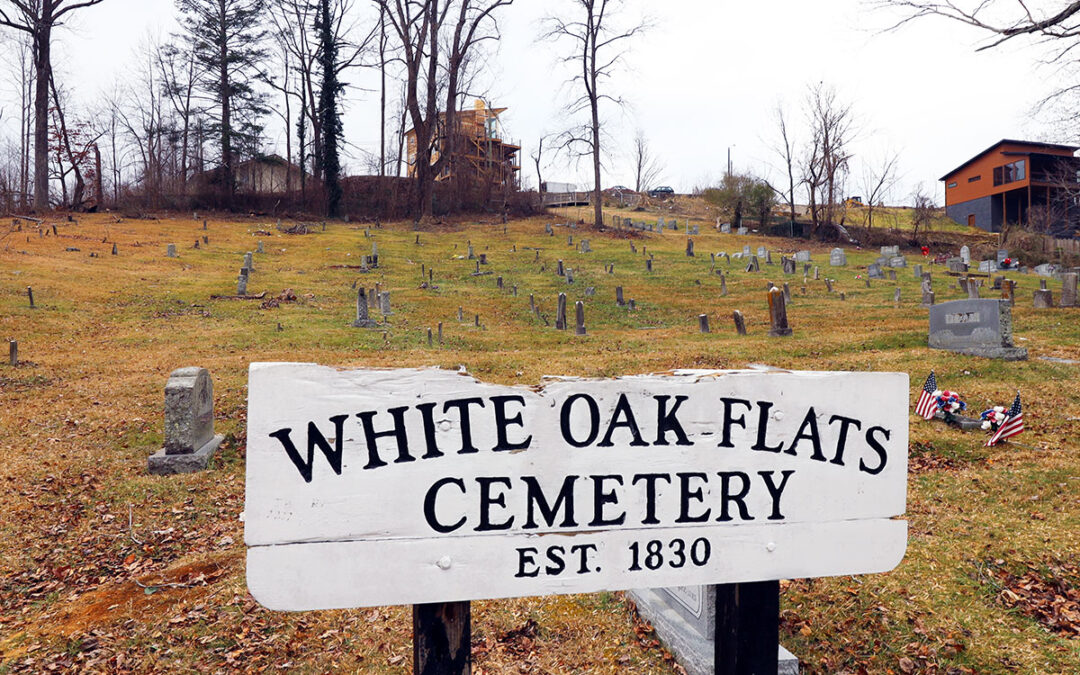White Oak Flats Cemetery, nestled in the heart of Gatlinburg, Tennessee, is a site rich in history, mystery, and a testament to the enduring legacy of the town’s founders. This article delves into the past of this historic cemetery, exploring its origins, the notable individuals resting there, and the mystical aura that seems to shroud it, especially highlighted by its miraculous survival of the great Gatlinburg wildfires.
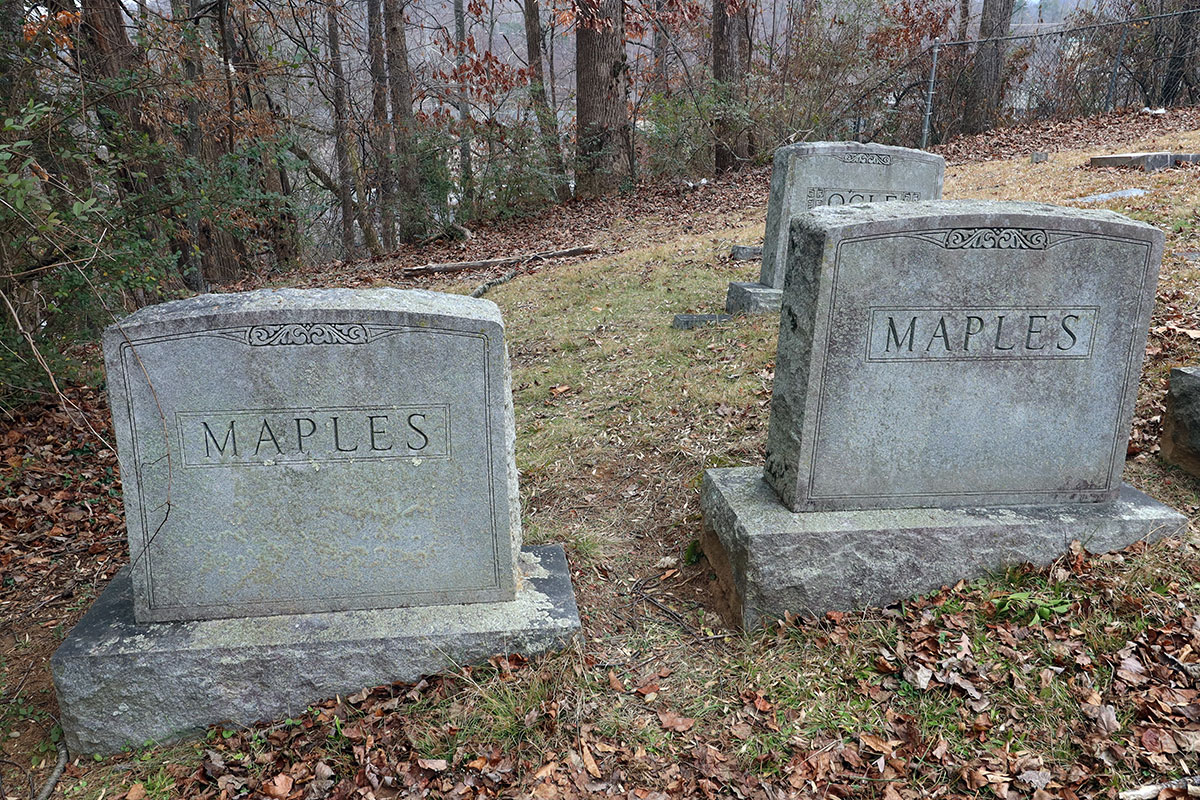
The Founding of White Oak Flats Cemetery
White Oak Flats Cemetery dates back to the early 19th century and is intrinsically linked to the founding of Gatlinburg. Originally, the area, known as White Oak Flats for the abundance of white oak trees, was settled by families seeking new opportunities in the uncharted territories of the Smoky Mountains. Among these early settlers were William Ogle and Martha Huskey Ogle, considered to be the founding family of Gatlinburg.
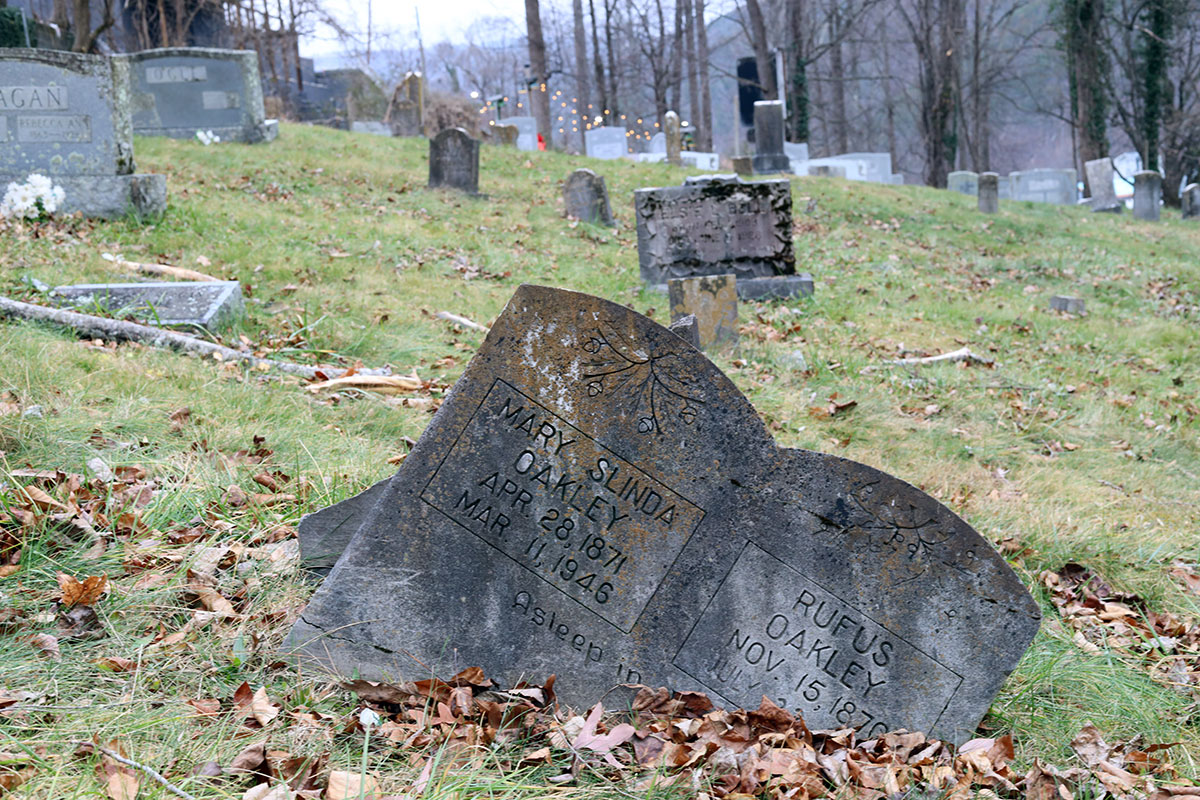
The land that would become the White Oak Flats Cemetery was initially part of the homesteads of these early settlers. As the community grew, the need for a communal burial ground became apparent, leading to the establishment of the cemetery. It became the final resting place for many of the town’s early settlers, including several members of the Ogle family.

Notable Figures Buried in the Cemetery
White Oak Flats Cemetery serves as a historical record of Gatlinburg’s past, housing the graves of many of the town’s founders and early residents. Among them is Noah Ogle, a descendant of William and Martha, known for his contributions to the town’s development. Another prominent figure is Richard Reagan, a key businessman and community leader in the 19th century. Equally significant is the Maples family, whose members played a crucial role in the early days of the settlement. The Maples, like the Ogles and Reagans, were instrumental in shaping the early community of Gatlinburg, and their presence in the cemetery underscores their lasting impact on the town’s history and development.
One interesting thing to note: Radford Gatlin, who founded the town’s first post office and for whom the town is named, is NOT buried in White Oak Flats because he was so disliked by the people of Gatlinburg that they ran him out of town!
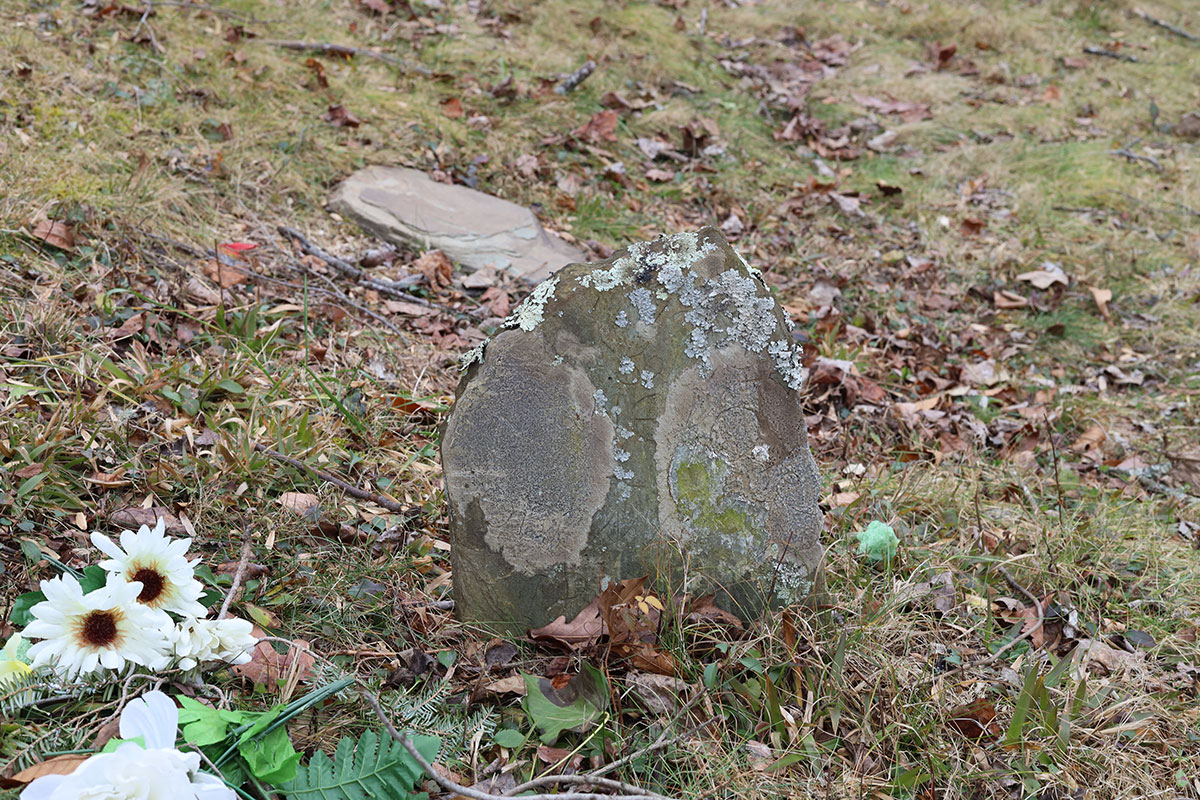
The cemetery is not only a resting place for Gatlinburg’s pioneers but also a reflection of the town’s evolution from a small frontier settlement to a bustling tourist destination. The headstones, ranging from simple fieldstones to more elaborate markers, tell a story of the changing times and the people who shaped Gatlinburg’s history.
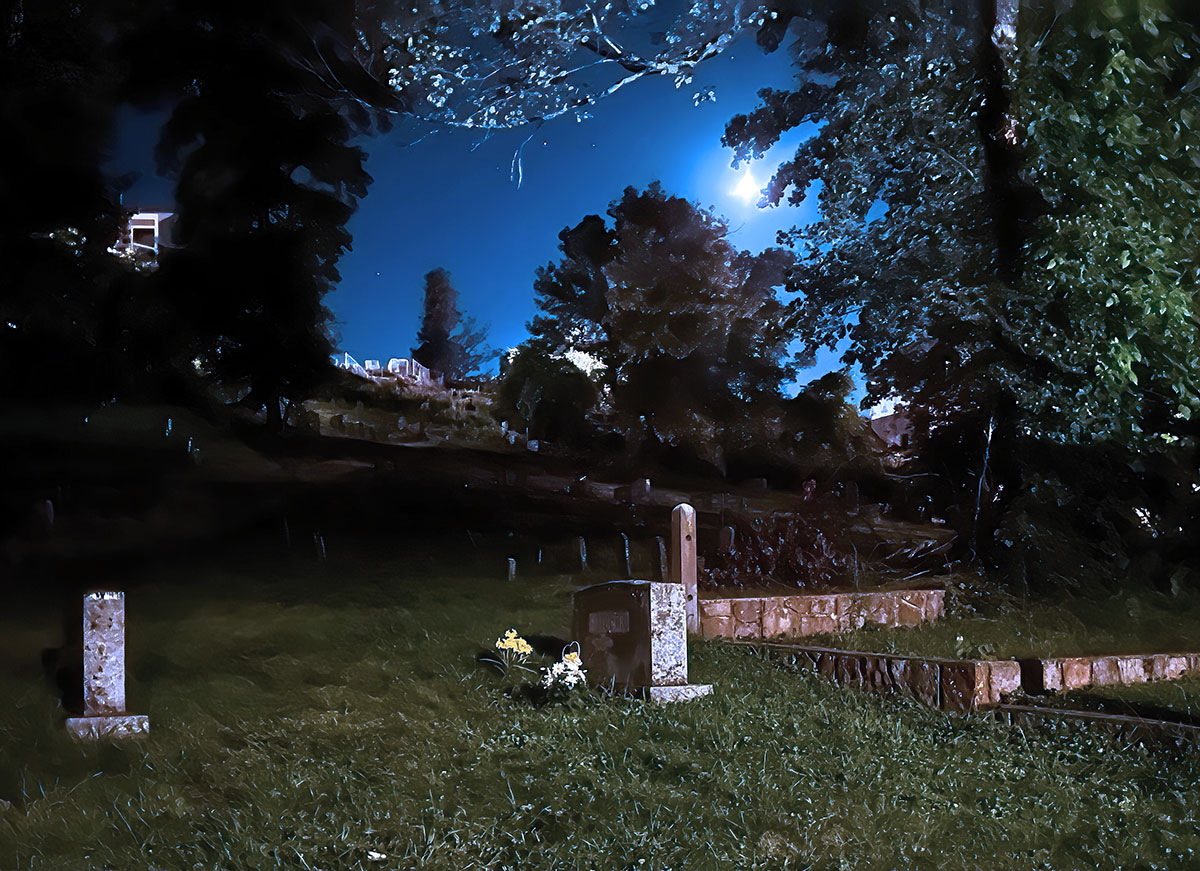
Mystical Aspects and Ghostly Sightings
White Oak Flats Cemetery has long been shrouded in a veil of mystery and folklore. Visitors and locals alike have reported strange occurrences and ghostly sightings, contributing to the cemetery’s mystical reputation. Some claim to have seen apparitions wandering among the tombstones or heard unexplained whispers in the wind. These tales have become a part of the cemetery’s lore, attracting those interested in the paranormal and adding an intriguing layer to its historical significance.
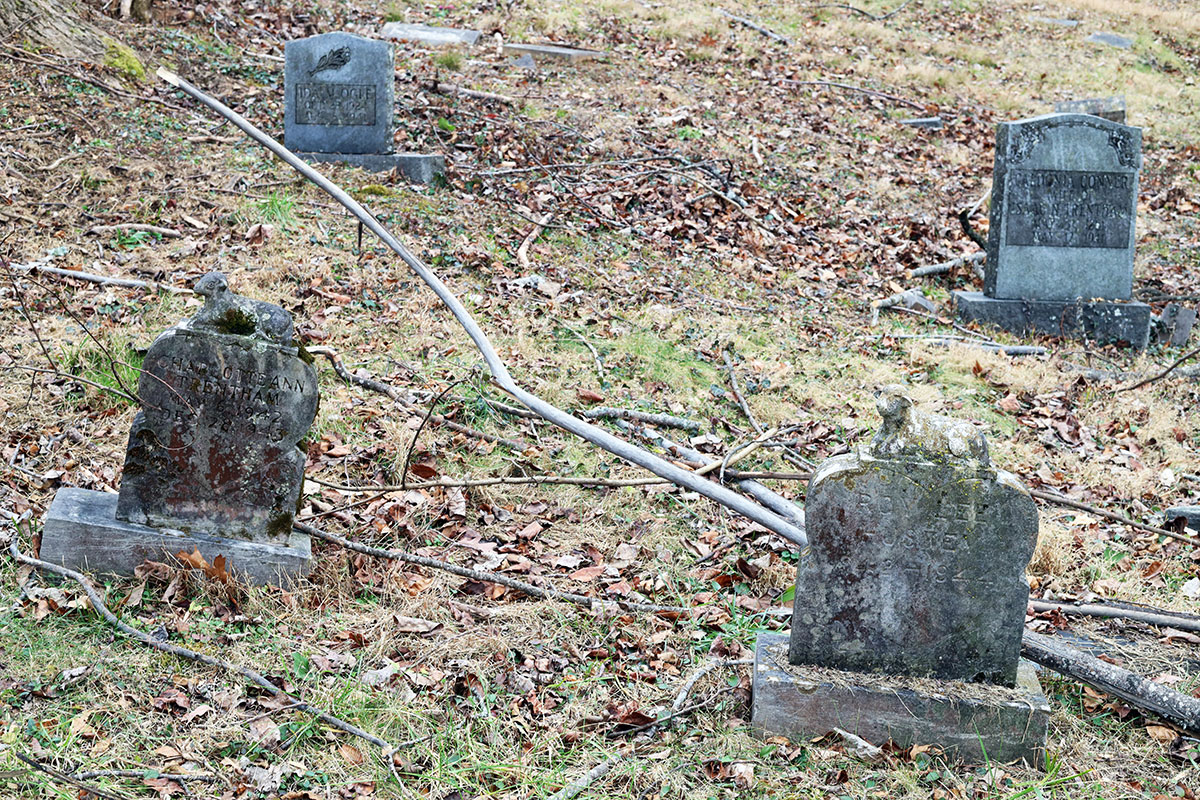
Survival of the Great Gatlinburg Wildfires
Perhaps the most miraculous aspect of White Oak Flats Cemetery’s history is its survival of the devastating Gatlinburg wildfires in 2016. These fires, which caused widespread destruction throughout the area, miraculously spared the cemetery. While the flames engulfed large swathes of land and property, the cemetery remained untouched, a phenomenon that many consider to be nothing short of miraculous.
This remarkable event has added to the mystical aura surrounding the cemetery. Some interpret it as a protective force guarding the final resting place of Gatlinburg’s founders, while others see it as a testament to the enduring spirit of the community. Regardless of interpretation, the cemetery’s survival has become a symbol of resilience and a source of comfort to the people of Gatlinburg.
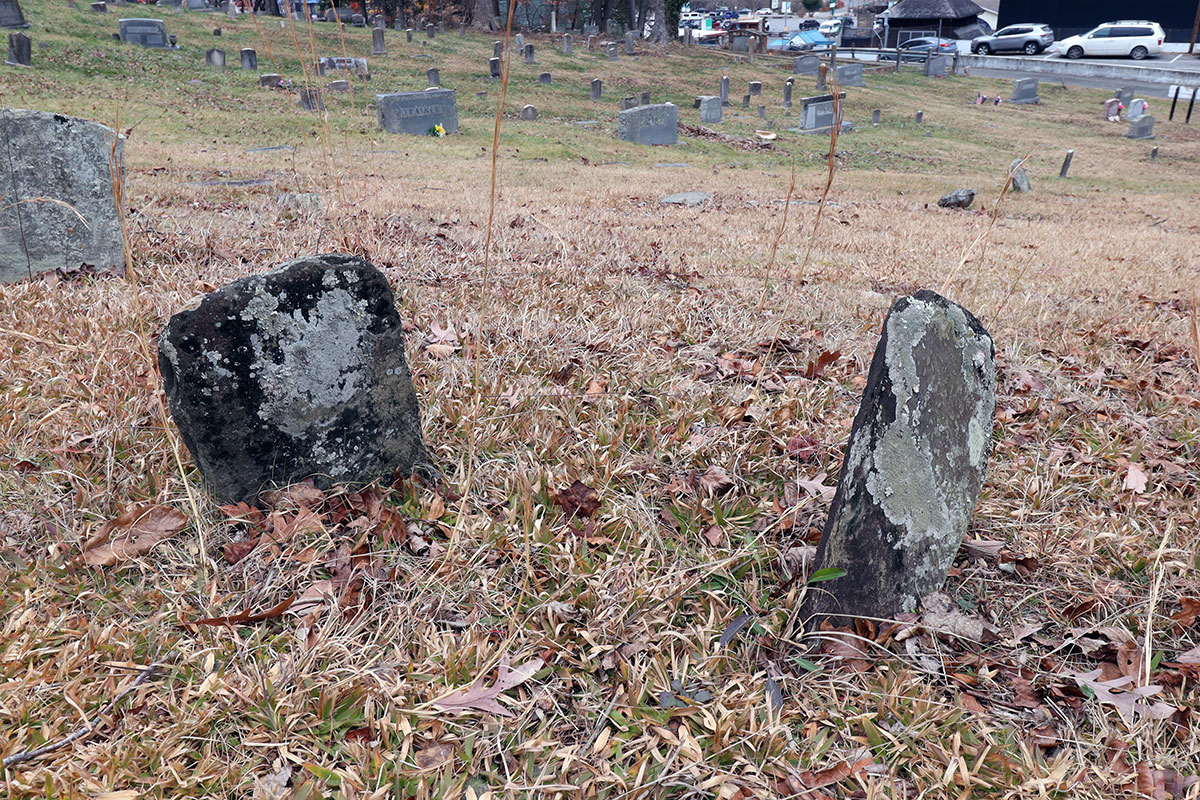
Conclusion
White Oak Flats Cemetery in Gatlinburg, Tennessee, is more than just a burial ground; it is a vital link to the town’s past and a testament to the enduring legacy of its founders. Its history is woven with tales of pioneers, the mystical aura of ghostly sightings, and the miraculous survival of natural disasters. This cemetery stands as a silent witness to the passage of time, the resilience of a community, and the unexplained mysteries that continue to captivate the imagination of those who visit.
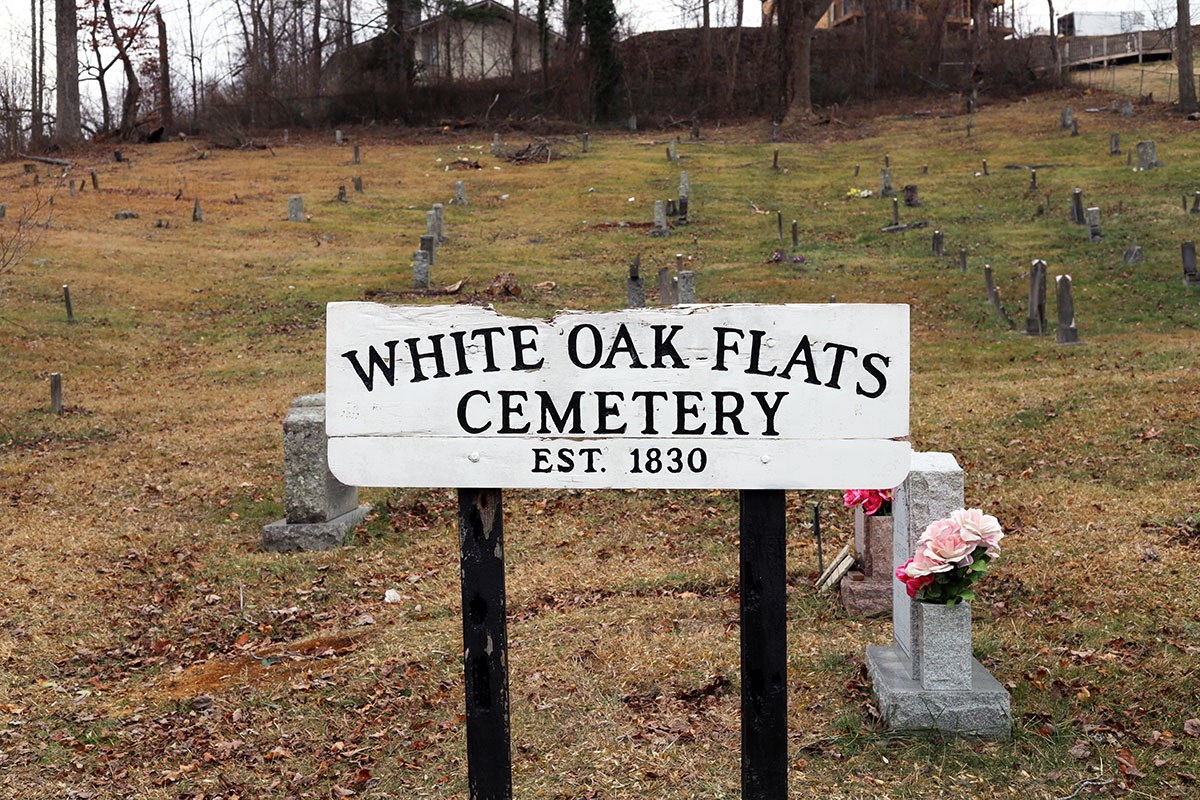
If you are visiting Gatlinburg and would like to see White Oak Flats Cemetery for yourself, it is very easy to find but hidden in plain sight if you don’t know where to look. All you have to do is walk up the road next to Fannie Farkle’s. You can’t miss it!

